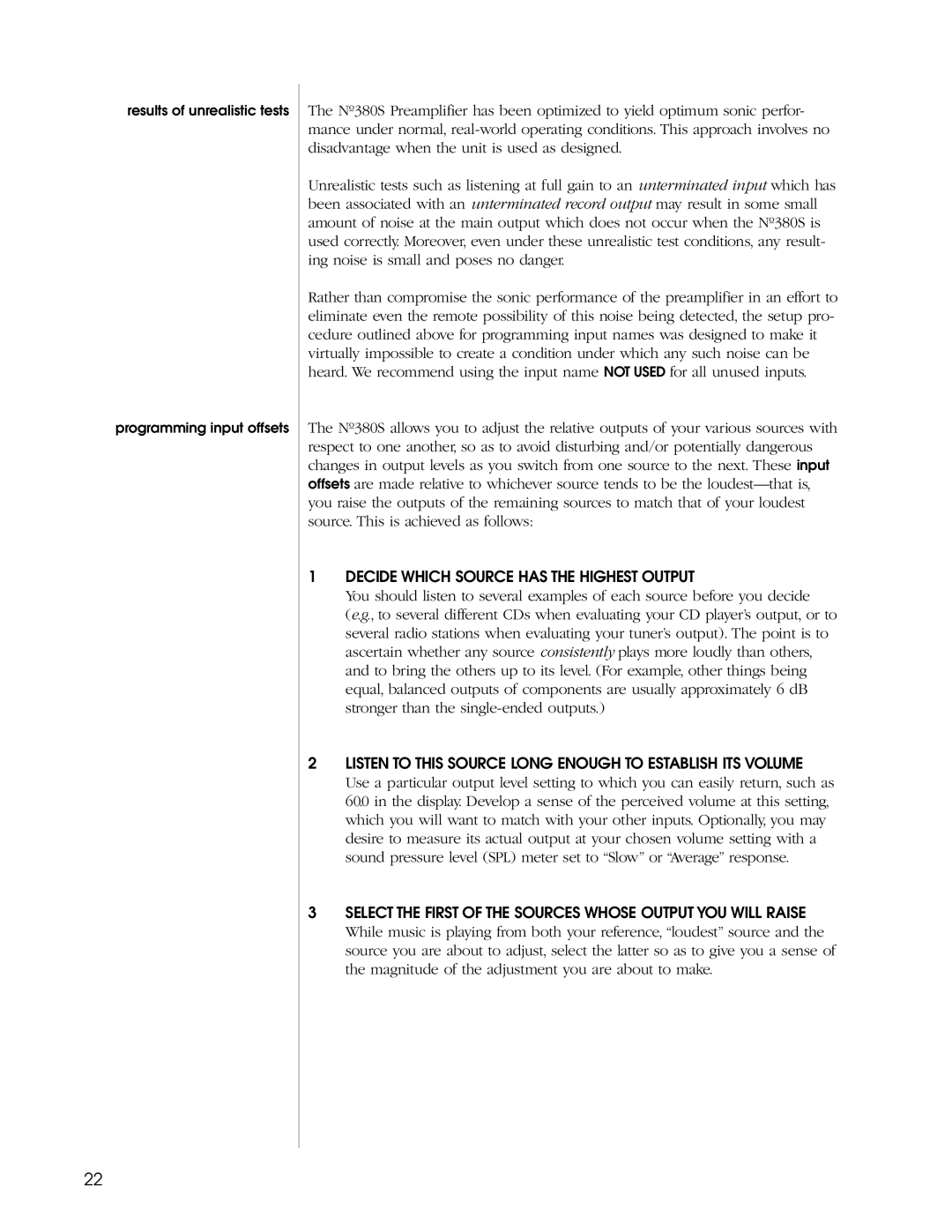results of unrealistic tests
programming input offsets
The Nº380S Preamplifier has been optimized to yield optimum sonic perfor- mance under normal,
Unrealistic tests such as listening at full gain to an unterminated input which has been associated with an unterminated record output may result in some small amount of noise at the main output which does not occur when the Nº380S is used correctly. Moreover, even under these unrealistic test conditions, any result- ing noise is small and poses no danger.
Rather than compromise the sonic performance of the preamplifier in an effort to eliminate even the remote possibility of this noise being detected, the setup pro- cedure outlined above for programming input names was designed to make it virtually impossible to create a condition under which any such noise can be heard. We recommend using the input name NOT USED for all unused inputs.
The Nº380S allows you to adjust the relative outputs of your various sources with respect to one another, so as to avoid disturbing and/or potentially dangerous changes in output levels as you switch from one source to the next. These input offsets are made relative to whichever source tends to be the
1DECIDE WHICH SOURCE HAS THE HIGHEST OUTPUT
You should listen to several examples of each source before you decide
(e.g., to several different CDs when evaluating your CD player’s output, or to several radio stations when evaluating your tuner’s output). The point is to ascertain whether any source consistently plays more loudly than others, and to bring the others up to its level. (For example, other things being equal, balanced outputs of components are usually approximately 6 dB stronger than the
2LISTEN TO THIS SOURCE LONG ENOUGH TO ESTABLISH ITS VOLUME
Use a particular output level setting to which you can easily return, such as 60.0 in the display. Develop a sense of the perceived volume at this setting, which you will want to match with your other inputs. Optionally, you may desire to measure its actual output at your chosen volume setting with a sound pressure level (SPL) meter set to “Slow” or “Average” response.
3SELECT THE FIRST OF THE SOURCES WHOSE OUTPUT YOU WILL RAISE
While music is playing from both your reference, “loudest” source and the source you are about to adjust, select the latter so as to give you a sense of the magnitude of the adjustment you are about to make.
22
